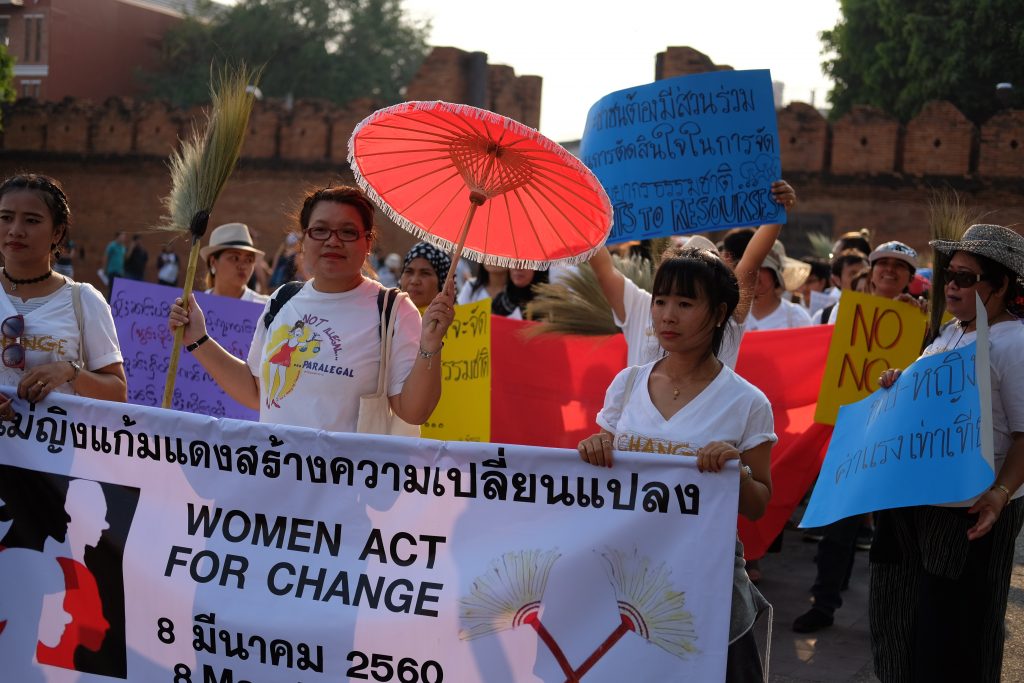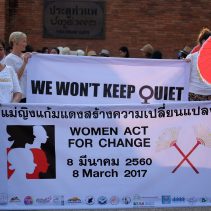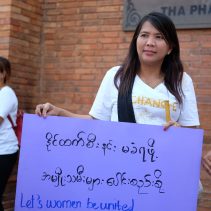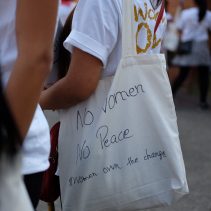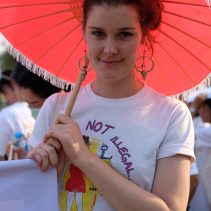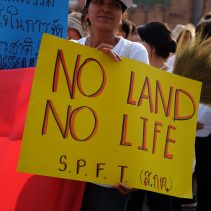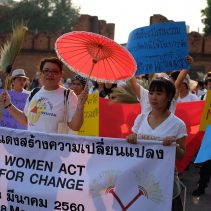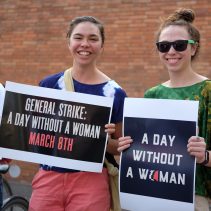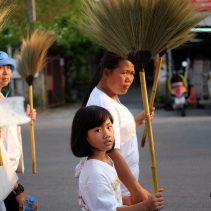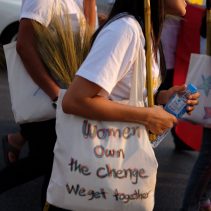It’s boiling hot on a sweltering Wednesday afternoon in Chiang Mai, but I have chills.
I’m at the International Women’s Day March, where more than 150 people have gathered to march the perimeter of Chiang Mai’s Old City in a demonstration for women’s rights, and it’s a powerful sight. The crowd that has gathered today is comprised of women from all walks of life and allies who’ve shown up to support the movement.
A majority of the marchers don white T-shirts emblazoned with “Women Own the Change,” a slogan repeated in the chants that ring out through the crowd. Leaders cry out, “Who makes the world?” The resounding response is, “Girls, girls!” “Who makes the change?” “Girls, girls!”
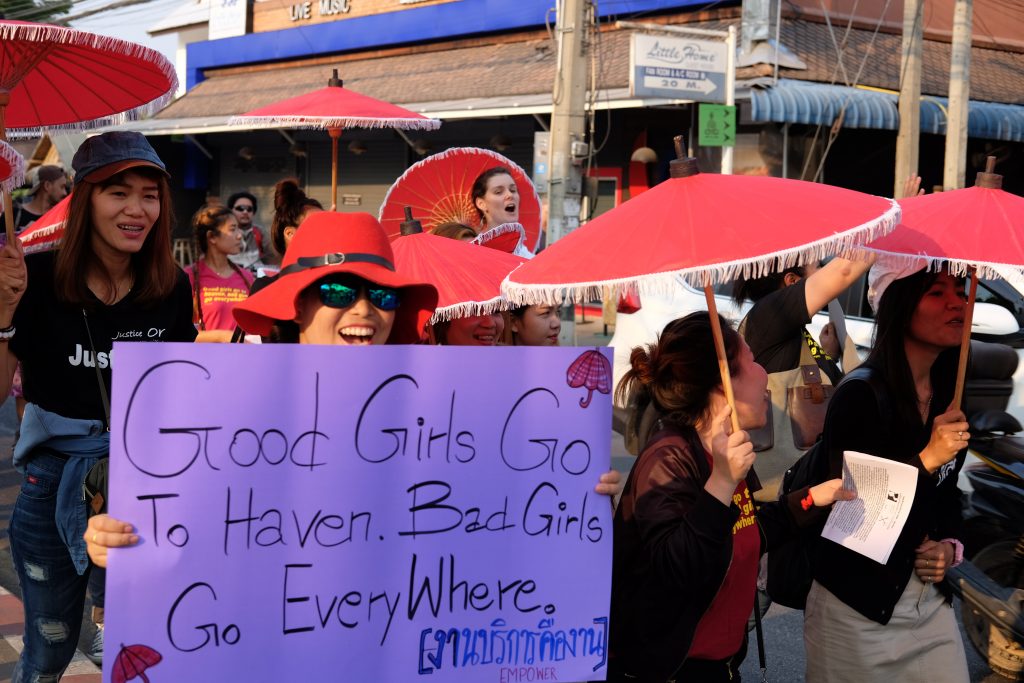
Many carry signs with messages for the people in cars, songtaws and motorbikes passing by, including one that reads “Equal Work for Equal Pay.” Straw bristles peek out from between the rows of heads in the crowd, since those not carrying signs are likely holding brooms.
Pranom Somwong, one of the women leading chants at the head of the march, explains the brooms’ symbolism. “The broom is symbolic of women working, but we’re saying we kept the broom today, we strike today, we’re not working. We’re making our demands.”
Those demands are outlined in a pamphlet that the march’s organisers hand out to participants and passers by. Some of the policy changes they hope their activism will ignite include “a living wage for mothers, extended paid maternity leave, paid family leave, child care centers, and Social Security.”
Pranom elaborates on the forces behind the march. She says, “We’re fed up with a lot of discrimination and wealth distribution, which has never gone to women, especially women who need it the most: the single moms, and the women whose work is not recognised, including sex workers and domestic workers.”
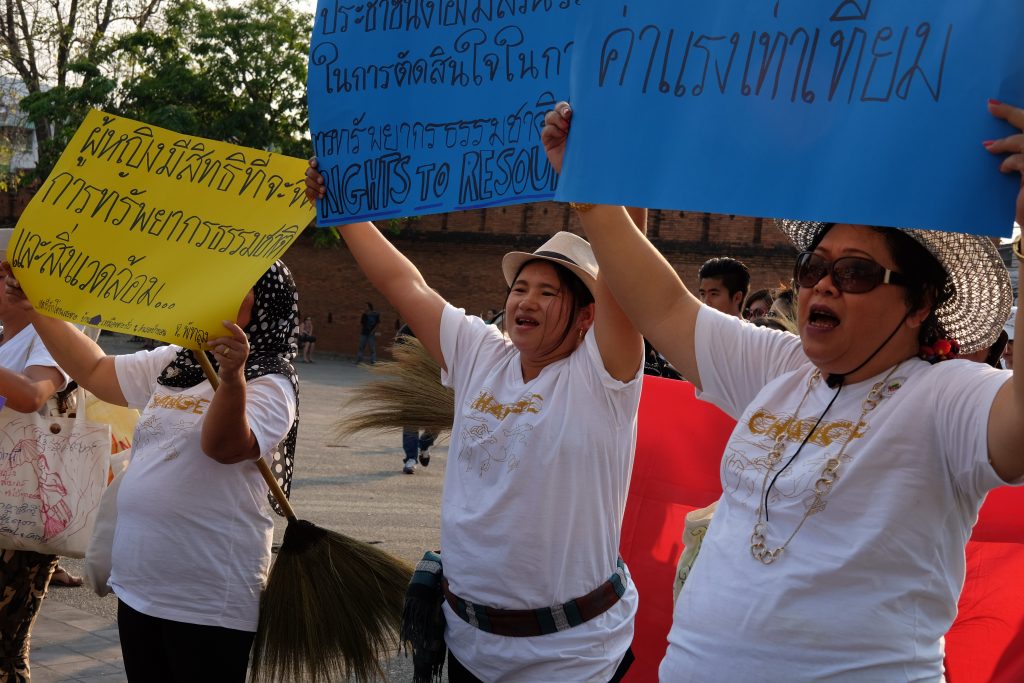
While the overarching purpose of International Women’s Day is women’s equality, its role takes on different nuances in each country where it has taken hold. In Thailand, one main concern is to amplify the voices of women who are traditionally marginalised or lack representation in Thai media. Ying Tzarm, a march participant, explains, “This is a gathering of the women who are being ignored from the media, especially migrants and refugee women who are living in Thailand. Here we have a lot of migrant women who come together from all different areas [and are now] working in Thailand.”
Another woman at the march, Julia Davis, elaborates on this, saying, “It’s not an exceptional thing for women to be resisting, to be fighting back. But it’s an exceptional thing for women who are often not represented in the media, or not represented accurately in the media, to come together and see each other and be seen for the hard work that they’re doing.”
As in most countries around the world, there are multitudes of women in Thailand who are often excluded from policy decisions and representation, Davis says. “It’s migrant women, it’s refugees, it’s sex workers, it’s trans women, it’s women with disabilities, it’s indigenous women, it’s women whose land is disappearing. They’re out here fighting but often not seen doing that. So this year is an opportunity.”
Another important message that the marchers hope their demonstration will send to the Thai government is a demand for protection from corporate land grabs that disproportionately affect women. One of the marchers, who asks to be identified only by her nickname Choosri, carries a sign saying, “No Land No Life.”
Through a translator, Choosri says, “We’re here so people around the world know about the concerns and the struggles of women here, and my struggles and my community’s struggles, which have to do with women’s rights and particularly rights to the land. The government has to protect the people’s rights to their land, since these policies affect women more.”
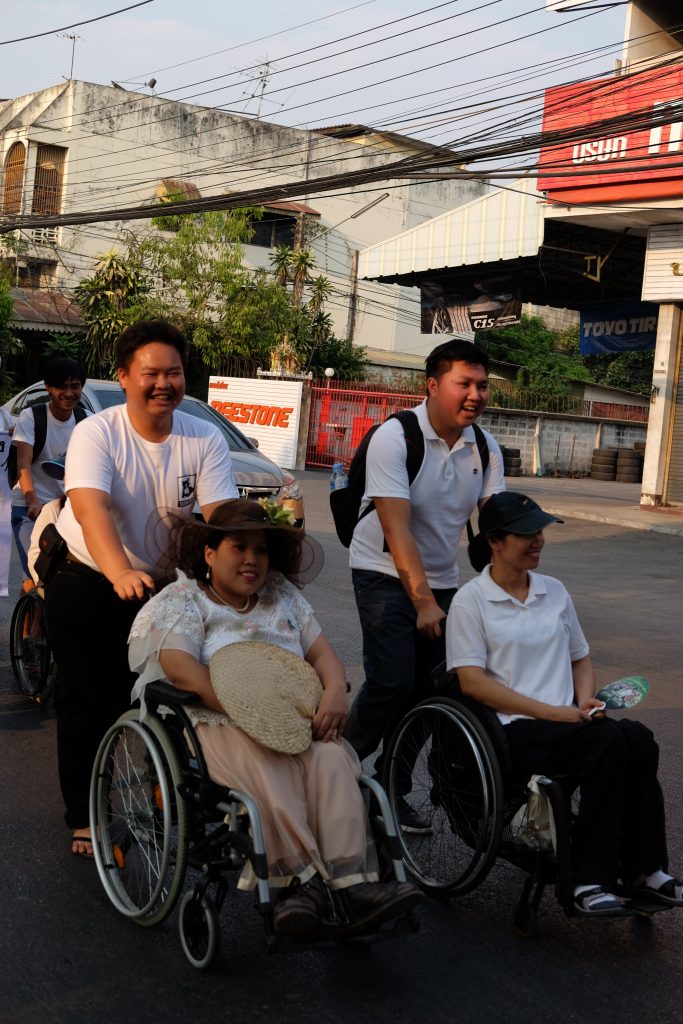
The “No Land No Life” slogan is part of a campaign by the human rights and environmental protection organisation Pan Asia Pacific. The mission of the campaign is to draw attention to the need for land reform and protection for small farmers from land-grabbing corporations. Because, as Choosri said, unequal land policies disproportionately impact rural women, a demand for land and resource protection is a central call at the march today.
While Chiang Mai’s march grew from the localised needs of women here looking for an opportunity to fight for equality, more than one participant of the march echoed the sentiment that they felt connected to an international movement for women’s rights.
For instance, the brooms and their symbolism took inspiration from global demonstrations. Somwong said, “This year we use the brooms together with the women’s rights movement in the UK and other places.”
Davis agrees that demonstrations in other countries have helped fuel their work, saying, “When we saw women acting around the world, we saw that we could link with other women and share our power in that way.” And Choosri adds, “The government, especially the military government, doesn’t provide opportunities for women’s voices to be heard. This is a special opportunity and we’re taking it.”
That opportunity to uplift women’s voices and fight for equality doesn’t end when the march reaches its conclusion.
“Every year, we gather women from all different areas, especially migrant women, to come and share their experiences. And to plan out what they are going to do next,” said Tzarm.
For the women in the march, for the men from the Workers Solidarity Association who handed out water bottles to the marchers, for the people on the streets who caught a glimpse of the broom- and sign-wielding crowd chanting that women own their ability to make change, the answer to what’s next is clear. Women are here and ready to fight for land reform, representation, equal pay, paid family leave and, as always, equality.
Photo credit by Ortal Liora Isaac
